
ap

ap
An International Peer Reviewed Research Journal
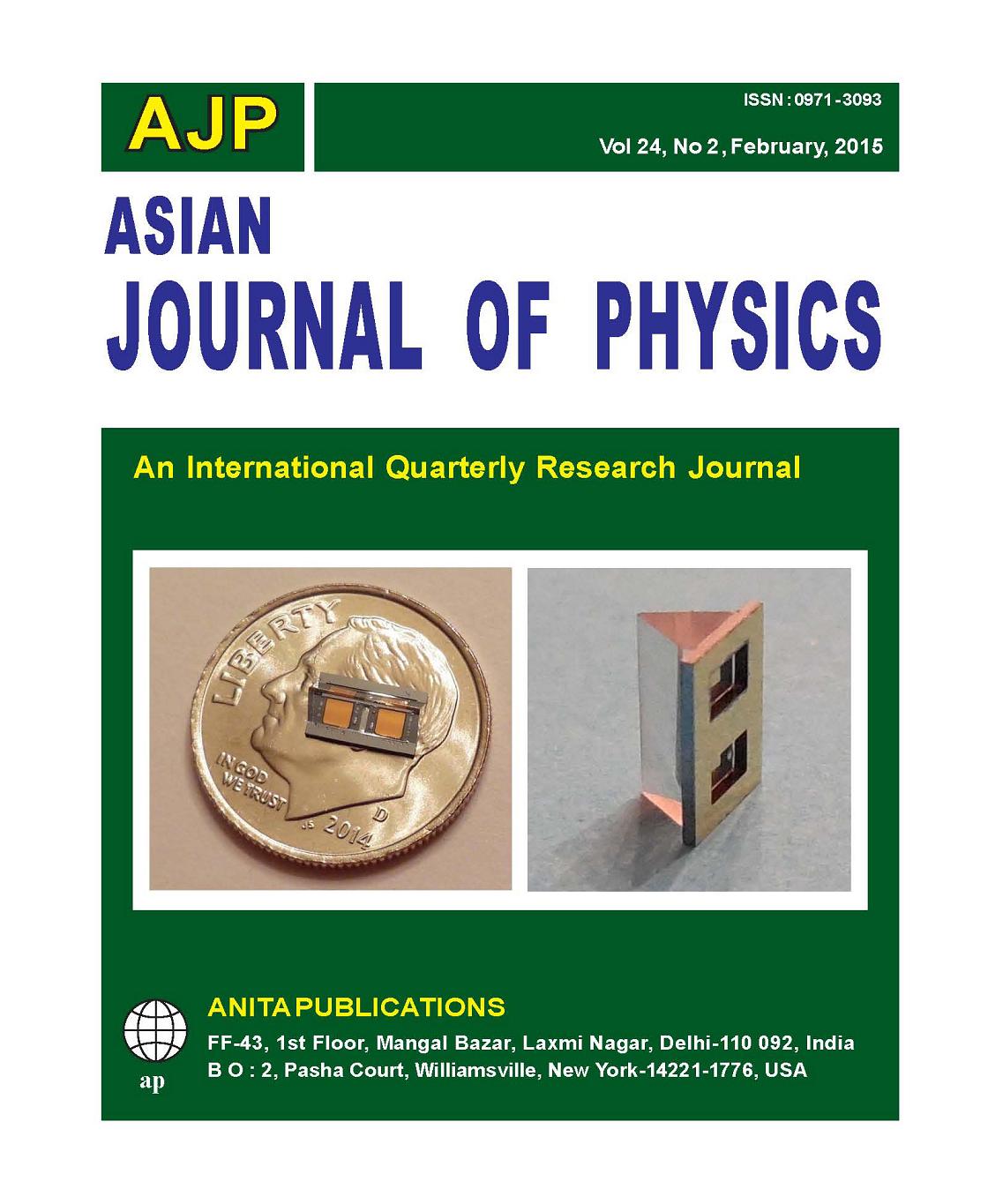
AJP
SSN : 0971 - 3093
Vol 24, No. 2, Febuary, 2015
Asian Journal of
Physics
Vol. 24, No 2 (2015)
Guest Editorial
Special Issue on Recent Progress on Photonics
The International Year of Light 2015 is launched at the opening ceremonies at the UNESCO headquarters in Paris, 19-20 January 2015. The International Year of Light is a global initiative that will highlight the importance of light and optical technologies in our daily lives, for the future, and for the development of society. It is a unique opportunity to inspire, educate, and connect the citizens of the world on a global scale. On 20 December 2013, The United Nations (UN) General Assembly 68th Session proclaimed 2015 as the International Year of Light and Light-based Technologies (IYL 2015).
In proclaiming an International Year focusing on the topic of light
science and its applications, the United Nations has recognized the
importance of raising global awareness about how light - based
technologies promote sustainable development and
provide solutions to global challenges in energy,
education, agriculture and health. Light plays a vital
role in our daily lives and is an imperative
cross-cutting
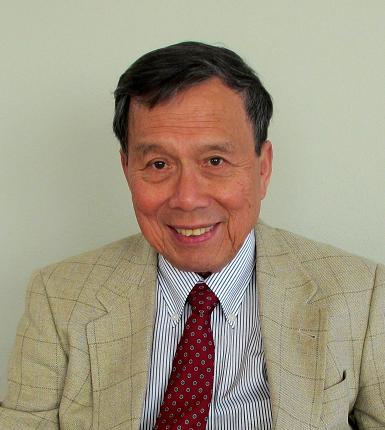
Francis T S Yu
discipline of science in the 21st century. It has revolutionized medicine, opened up international communication via the Internet, and continues to be central to linking cultural, economic and political aspects of the global society.
We are fortunate that this special issue is published in the International Year of Light 2015. In the spirit of the International Year of Light, this special issue is devoted to the recent progress on photonics. More specifically, the special issue includes:
photonics in information theory:
(1)
Light and information
(2) Time, space, information and
life;
photonics in biomedical application:
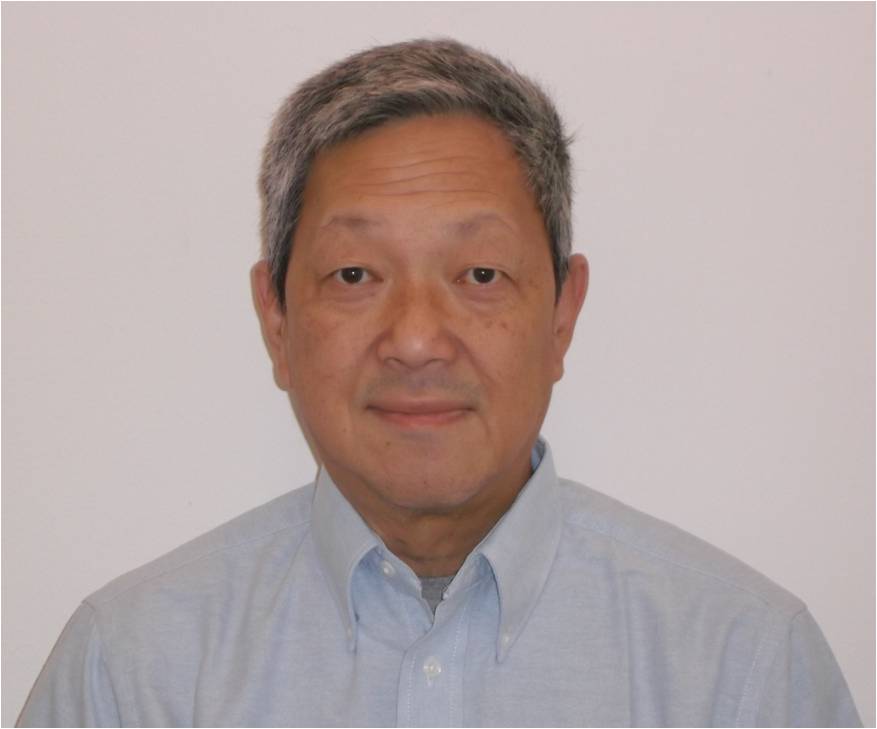
Suganda
Jutamulia
(3)
Micro-prism test chip for surface Plasmon
resonance;
(4)
One-lens fluorescence microscope using CMOS image
sensor;
(5)
Laser module for acupuncture; and
(6) Fringe projection techniques using endoscopes;
photonics in speckle related
application:
(7) Note
on the use of interference terms of Wigner distribution function
for specklegram analysis;
(8)
Influence of space-time speckle effect on image in synthetic
aperture imaging ladar; and
(9) Despeckle methods and their new application to laser projector;
photonics in holography:
(10)
Rh-doped Bi12TiO20 photorefractive crystals
and their applications in near infrared sensitive light valve
devices; and
(11) Simulation of volume holographic storage system with VOHIL model;
photonics in
correlator:
(12)
Reduction of sidelobe energy by shifts in training images for the
Mach-Zehnder joint transform correlator; and
(13) A hybrid method to improve the accuracy of multichannel volume holographic correlators;
photonics in
radio frequency domain:
(14) Multi-port broadband adaptive RF power splitter employing an Opto-VLSI processor;
photonics in fiber laser:
(15) Analysis and experiment of Opto-DMD based multi-channel tunable fiber laser;
photonics in photonic crystal:
(16) Understanding photonic crystal from interference filter;
and photonics in radar imaging:
(17) Optical processing for radar imaging and broadband signal.
Foreword
I take immense pleasure in writing this foreword to the special issue of Asian Journal of Physics. Guest edited by two prominent personalities and aptly titled “Recent Progress in Photonics”, the issue is a fine collection of articles relating to various aspects of photonics. My pleasure is heightened by the fact that I have known Professors Francis Yu and Suganda Jutamulia personally for a number of years. Besides having frequent correspondence with them, I have met them in various international conferences and enjoyed their company and the discussions I had with them. Professor Yu, of course, is internationally renowned as an author of numerous books on various aspects of optics, particularly on what has come to be known as ‘Information Optics’. Prof. Jutamulia has collaborated with him in writing and editing some of the books as also special issues of journals. On a personal note, my group’s work on information optics was largely influenced by Prof. Yu and collaborators’ researches.
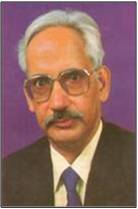
The guest editorial has given background of the year 2015 being designated by UNESCO as the “International Year of Light and Light-based Technologies”. This is a recognition of the fact that optics is contributing in a big way to various facets of our lives. Considerable research investments are being made by various nations not only for augmenting research work but also for wealth creation. It is vital that more and more awareness be created about the role that light plays in communications, astronomy, life sciences, health, agriculture, energy, environment, and manufacturing among a host of other areas. Very rapid advances are being witnessed in nanophotonics ( metamaterials, plasmonics), adaptive optics, optical coherence tomography, adaptive optics, diffractive optics, digital holography, holographic displays, computational imaging, detectors, optical cryptography, space optics, microscopy, and optical materials to name a few areas.
Numerous events are being organized around the world. A number of professional societies are playing a leading role in this direction. Some of these are: SPIE, OSA, APS, AIP, and EPS. Many of the Nobel prize winners have volunteered to participate in lecture and discussion sessions. An international exhibition program named “LIGHT: Beyond the Bulb” has been launched so that a wider cross-section of the audience can be engaged. Numerous posts and blogs have been written and continue to be written. Light-based technologies are expected to revolutionize the 21st century as electronics did in the 20th century. Optical technologies also give new thrust- from art to archaeology, cultural heritage, nature, art, and origin of life. We have all experienced the mood lifting effect of a walk in the sun which means that the sunshine helps fight the blues. Supermarket barcode scanners, CD players, computer printers, LCD screens, and tiny lenses in our mobile cameras, are some of the examples which we see and frequently use in our daily lives.
Professor Vinod Rastogi deserves our congratulations on bringing out the special issue and making Professors Yu and Jutamulia agree to spare their valuable time for guest editing such a readable issue. It is indeed remarkable that, a number of special issues of Asian J.Phys. on optics were published in 2014 and some more are slated to be published in 2015. This initiative of Prof. Rastogi is indeed praise-worthy and is a notable contribution to the events being organized in the “International Year of Light”. May the Almighty give Prof. Rastogi a long and healthy life so that he can march ahead with the activity which is he so passionate about.
Kehar Singh FNAE
Formerly Dean and Professor IIT Delhi
keharsiitd@gmail.com
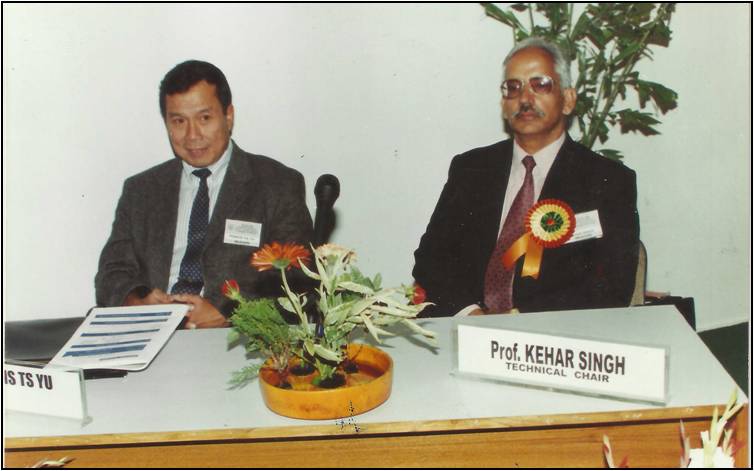
Asian Journal of Physics Vol. 24, No 2 (2015) 205-215
On the Occasion of International Light
Year
Light and Information
Francis
T S Yu
Emeritus Evan Pugh Professor of Electrical
Engineering
Penn State University
University Park, PA 16802,
USA
______________________________________________________________________________________________________
Light is not just the major source of energy that supports life and it is also a very viable information carrier. In this article, we showed that there is an intimate relationship between information and light as a carrier. We discussed the Uncertainty Principle of Heisenberg as related to information, in which we showed that every bit of information (or quanta of light) is limited by an unit cell of information and it is associated with a cost of entropy. Examples are given within the limit and beyond the Uncertainty Principle. We have shown that time and frequency resolutions cannot be observed simultaneously and yet the imaging can also be obtained within the limit of Certainty! ©Anita Publications. All rights reserved
Total Refs : 10
___________________________________________________________________________________________________________________________________
Asian Journal of Physics Vol. 24, No 2 (2015) 217-223
Time, Space, Information and life
Francis T S Yu
Emeritus Evan Pugh Professor of Electrical Engineering
Penn State University
University Park, PA 16802, USA
___________________________________________________________________________________________________________________________________
One of the most intriguing aspects of life must be the concept of time! In other words, if there is no time, then there would be no life! Life may be known as; if there is a beginning, then there is an end! In a broader sense; life can be repeated again and again until it is totally disappeared, such as human race. But each human life is actually a different life! © Anita Publications. All rights reserved.
Total Refs : 9
___________________________________________________________________________________________________________________________________
Asian Journal of Physics Vol. 24, No 2 (2015) 225-230
Micro-prism test chip for surface plasmon resonance
Benny L Chan and Suganda Jutamulia*
EcoLife Technologies, LLC and
Department of Biomedical Engineering, University of Northern California
1300 Valley House Drive #100-7, Rohnert Park, CA 94928, USA
___________________________________________________________________________________________________________________________________
A disposable micro-prism test chip for surface plasmon resonance measurement comprises a micro-tray having at least one through window and a micro-prism mounted on the micro-tray. The micro-tray also has a half-through cavity facing the micro-prism. The surface of the micro-prism in the through window is coated with a thin metal layer. The disposable micro-prism test chip is disposed after at least one use. The micro-prism is fabricated by pulling a heated preform, where the preform has the same cross-section as that of the pulled micro-prism. © Anita Publications. All rights reserved.
Keywords: Surface plasmon resonance, SPR, disposable micro-prism test chip, pulled micro-prism, glass preform, micro-tray, thin metal layer, silicon wafer
Total Refs :
5
___________________________________________________________________________________________________________________________________
Asian Journal of Physics Vol. 24, No 2 (2015) 231-236
One-lens fluorescence microscope using CMOS image sensor
Hasan Gadjali and Suganda Jutamulia*
Department of Biomedical Engineering
University of Northern California, 1300 Valley House Drive #100-7, Rohnert Park, CA 94928, USA
___________________________________________________________________________________________________________________________________
A fluorescence imaging module includes a fluorescence sample, a lens, an emission filter, an image sensor, and an illuminating device disposed between the sample and the lens. The illuminating device comprises a truncated pyramid for bending light emitted by the excitation light source toward the central area of the fluorescence sample. Light from the excitation light source enters from a slanted side surface of the truncated pyramid and emerges at the top of the truncated pyramid to illuminate the sample. The fluorescence image of the sample is formed by the lens through the emission filter on the image sensor. © Anita Publications. All rights reserved.
Keywords: One-lens fluorescence microscope, compact fluorescence microscope, fluorescence microscope module, CMOS image sensor, truncated pyramid illuminating device.
Total Refs : 6
___________________________________________________________________________________________________________________
Asian Journal of Physics Vol. 24, No 2 (2015) 237-242
Laser Module for Acupuncture
Fidelis Zaini Jutamulia
Private Practice, Jalan Gumilang No. 4, Bogor, 16143, Indonesia
___________________________________________________________________________________________________________________________________
A laser module including a modified laser diode is proposed for acupuncture. The modified laser diode has a collimating lens in the can of its package, so a collimated laser light is emitted from the modified laser diode. The collimated laser light may be used as acupuncture needle replacement. © Anita Publications. All rights reserved.
Keywords: Laser module, laser diode, collimated laser light, orthogonal cylindrical lenses, pulled preform, acupuncture, needle replacement.
Total Refs : 6
___________________________________________________________________________________________________________________________________
Asian Journal of Physics Vol. 24, No 2 (2015) 243-248
Fringe projection techniques using endoscopes
Wei-Hung Su1, Tzu-Chien Hsu1, Cho-Yo Kuo1, and Wei-Chia Su2
1Department of Materials and Optoelectronic Science,
National Sun Yat-Sen University, Kaohsiung 804, Taiwan
2Graduate Institute of Photonics, National Changhua University of Education
___________________________________________________________________________________________________________________________________
In this paper, a method using an endoscope to retrieve the surface profile of an inspected object is presented. A fringe pattern diffracted from a volume hologram is projected onto the inspected surface. The endoscope observes the projected fringes from another viewpoint. Fringes on the obtained image are deformed by the surface profile, and consequently are analyzable to retrieve the 3D shape. The size of the hologram is so compact that using an endoscope to retrieve the surface profile inside a body cavity is desirable. © Anita Publications. All rights reserved.
Keywords: fringe projection, fringe analysis, projected fringe profilometry, holography, optical inspection
Total Refs : 9
___________________________________________________________________________________________________________________________________
Asian Journal of Physics Vol. 24, No 2 (2015) 249-252
Note on the use of interference terms of Wigner distribution function for specklegram analysis
Joewono Widjaja
Institute of Science, Suranaree University of Technology
Nakhon Ratchasima 30000, Thailand
___________________________________________________________________________________________________________________________________
Interference term produced by Wigner distribution function is proved to be useful for specklegram analysis. Displacement information of specklegrams can be numerically extracted by low pass filtering the unwanted interference terms of the Wigner distribution output. This study is verified through computer simulations. © Anita Publications. All rights reserved.
Total Refs : 11
___________________________________________________________________________________________________________________________________
Asian Journal of Physics Vol. 24, No 2 (2015) 253-267
Influence of space-time speckle effect on image in synthetic aperture imaging ladar
Qian Xu, Liren Liu,* Jianfeng Sun, Zhu Luan, Peipei Hou, Mei Yang and Lijuan Wang
1Key
Laboratory of Space Laser Communication and Testing
Technology,
Shanghai
Institute of Optics and Fine Mechanics, Chinese Academy of
Sciences, No. 390,
Qinghe Road, Jiading District, Shanghai 201800, China
___________________________________________________________________________________________________________________________________
In synthetic aperture imaging ladar (SAIL), the space-time varying speckle effect markedly degrades image quality. In this paper, the space-time varying speckle effect and its influence on imaging resolution in a SAIL are analyzed. Results show that during the two-dimensional data acquisition speckle pattern in the scope of the optical receiving antenna shifts an average scale in both range and azimuth directions. Additional window functions are also imported to the imaging resolution, thereby affecting the intensity and scale of imaging resolution. Our results may be valuable for further studies on the suppression of speckle effect in SAILs. © Anita Publications. All rights reserved.
OCIS codes: (030.6140) Speckle; (280.6730) Synthetic aperture radar; (330.6130) Spatial resolution; (280.3640) Lidar http://dx.doi/org/10.1364/AO.99.099999.
Total Refs : 11
___________________________________________________________________________________________________________________________________
Asian Journal of Physics Vol. 24, No 2 (2015) 269-274
Despeckle methods and their new application to laser LCOS projector
Suganda Jutamulia
University of Northern California
Biomedical Engineering Department
1300 Valley House Drive, #100-7, Rohnert Park, CA 94928
___________________________________________________________________________________________________________________________________
Early despeckle methods are revisited. In earlier problem, speckles are caused by the diffused holographic object, and in current problem, speckles are caused by the diffused projection screen. © Anita Publications. All rights reserved.
Keywords: Despeckle; hologram; laser projector; LCOS
Total Refs : 7
___________________________________________________________________________________________________________________________________
Asian Journal of Physics Vol. 24, No 2 (2015) 275-282
Rh-doped Bi12TiO20 photorefractive
crystals and their applications
for near infrared sensitive light valve devices
Vera Marinova1,2*, Ren Chung Liu1, Shiuan Huei Lin3,Yi Hsin Lin1 and Ken Yuh Hsu1
1Department of Photonics, National Chiao Tung University, University Str., 1001, Hsinchu 30010, Taiwan
2Institute of Optical Materials and Technologies, Acad, G. Bonchev Str. 109, Sofia, Bulgaria
3Department of Electrophysics, National Chiao Tung University, University Str., 1001, Hsinchu 30010, Taiwan
___________________________________________________________________________________________________________________________________
We review the effect of Rh-doping on optical and holographic properties of Bi12TiO20 (BTO)crystal and its combination with liquid crystal (LC) into an optically addressed liquid crystal light valve (LCLV) device. Real-time holographic recording has been performed in Rh-doped BTO at 1064 nm with detected significant improvement of the sensitivity and the response time. Furthermore, by using 532 nm light for pre-excitation, an operation speed of 20 ms is achieved at 1064nm. Phase modulation characteristics of the proposed BTO:Rh/LCLV device are demonstrated, supporting further possibilities for near infrared nonlinear applications. © Anita Publications. All rights reserved.
Total Refs : 24
___________________________________________________________________________________________________________________________________
Asian Journal of Physics Vol. 24, No 2 (2015) 283-294
Simulation of volume holographic storage system with VOHIL model
Chih-Yuan Cheng, Yeh-Wei Yu, Zhong-Mou Hsu, and Ching-Cherng Sun*
Department of Optics and Photonics, NationalCentralUniversity, Chung-Li 320, Taiwan
___________________________________________________________________________________________________________________________________
The simple paraxial formulas for calculating point spread function (PSF), shifting selectivity and pixel migration of holographic storage system are presented. These formulas show that both amplitude and phase modulation make no obvious improvement in shifting selectivity, but PSF is obvious improved by phase modulation. It can be designed properly for not harming the shifting selectivity too much. A simplified formula shows a clear physical concept that the shifting selectivity is just the square of Fourier transform of the intensity distribution of reference pattern and does not depend on the thickness of the disc. Another formula shows that disc rotation or shift usually causes pixel migration, and thus the signal quality is decreased. Using paraxial approximation analysis, an optimal geometrical distance ratio, K, is calculated to compensate for pixel migration and improves image quality during disc rotation or shift. The result of approximation is confirmed by the simulation. © Anita Publications. All rights reserved.
Total Refs : 25
___________________________________________________________________________________________________________________________________
Asian Journal of Physics Vol. 24, No 2 (2015) 295-299
Reduction of sidelobe energy by shifts in training images for the Mach-Zehnder joint transform correlator
Chewei Chen and Chulung Chen
Department of Photonics Engineering, Yuan Ze University, Taoyuan 32003, Taiwan
___________________________________________________________________________________________________________________________________
Correlation reference function has been designed in our previous research for the non-zero order joint transform correlator. In order to yield the reference function, training images were put at the presumed center. However, it could not guarantee that the average cross correlation energy is smallest. To improve this, in this paper, training images are shifted for optical pattern recognition with a Mach-Zehnder interferometer. Numerical result shows that this technique can be implemented at the input plane of liquid crystal spatial light modulator. In particular, each liquid crystal spatial light modulator in reflective mode is modulated along the real-valued axis. © Anita Publications. All rights reserved.
Keywords: Joint transform correlator; Mach-Zehnder interferometer
Total Refs : 15
___________________________________________________________________________________________________________________________________
Asian Journal of Physics Vol. 24, No 2 (2015) 301-308
A hybrid method to improve the accuracy of multichannel volume holographic correlators
Liangcai Cao, Qingsheng He, and Guofan Jin
Department of Precision Instrument,
State Key Laboratory of Precision Measure Technology and Instruments,
Tsinghua University, Beijing 100084
___________________________________________________________________________________________________________________________________
Due to large database storage capacity and high speed multi-channel parallel correlation, volume holographic optical correlator (HOC) is a promising candidate for on-board real-time pattern recognition. The optical calculation accuracy is the bottleneck of this technology for practical applications. A hybrid method combined of standardizing and inter leaving images is proposed to improve the output accuracy of volume holographic correlators. The method equalizes the filling ratios of ON to ALL pixels in the processed images and redistributes the pixels inside images without changing the inner products. It can eliminate the impact of the correlation pattern difference on the accuracy of inner product calculation. Experimental tests shows that this method could acquire better calculation value. © Anita Publications. All rights reserved.
Total Refs : 10
___________________________________________________________________________________________________________________________________
Asian Journal of Physics Vol. 24, No 2 (2015) 309-314
Multi-port broadband adaptive RF power splitter employing an Opto-VLSI Processor
Haithem A B Mustafa1, Feng Xiao1,Kamal Alameh1 and Feijun Song2
1Electron Science Research Institute, Edith Cowan University, Australia
2China Daheng Optics Division, China Daheng Group, Beijing, China
___________________________________________________________________________________________________________________________________
A novel multi-port broadband adaptive RF (Radio Frequency) power splitter structure is proposed and experimentally demonstrated. The multi-port broadband RF adaptive power splitter structure employs an Opto-VLSI processor for optical beam multicasting in conjunction with an optical fiber array, a photo-detector array, and an array of 4-f imaging lens system for splitting a broadband RF signal into multiple output RF ports with user-defined splitting ratios. A proof of concept 1×8 broadband adaptive RF power splitter structure, driven by optimized multicasting phase holograms uploaded onto the Opto-VLSI processor, is developed, demonstrating the ability to arbitrarily split an RF signal to various output port with variable power splitting ratios over a wide frequency range. © Anita Publications. All rights reserved.
Keywords: Opto-VLSI processing, RF splitting, microwave photonics
Total Refs : 21
___________________________________________________________________________________________________________________________________
Asian Journal of Physics Vol. 24, No 2 (2015) 315-324
Analysis and experiment of Opto-DMD based multi-channel tunable fiber laser
Binbin Yan1, Tao Wang1, Xiao Chen2, Feijun song3, Feng Xiao4, Kamal Alameh4, Gang-Ding Peng5
1State Key Laboratory of Information Photonics and Optical Communications, Beijing University of Posts and Telecommunications, Beijing 100876, China
2College of Science, Minzu University of China, Beijing 100081, China
3China Daheng Group, Inc., #A9 ShangdiXinxi Avenue, Haidian District, Beijing 100085, China
4Electron Science Research Institute, Edith Cowan University, Joondalup, WA 6027, Australia
5Photonics & Optical Communications, University of New South Wales, Sydney 2052, NSW, Australia
___________________________________________________________________________________________________________________________________
We use a digital micromirror device (DMD) as wavelength selector in tunable fiber lasers because it has advantages in high resolution, fast switching speed, high diffraction efficiency etc. In this paper, for reducing the diffraction loss and improving the system stability, we analyze the dependence of diffractive properties of the Opto-DMD grating on the incident angle and pixel size in detail, and give its effect on properties of fiber laser parameters. The theoretical results are agreement with the experiments very well. By using an Opto-DMD and erbium-doped fiber amplifiers (EDFA), we experimentally demonstrate a high stable single-polarization multi-channel wavelength-tunable fiber laser and a single-longitudinal-mode multi-channel wavelength-tunable fiber laser with good performance, respectively. © Anita Publications. All rights reserved.
Total Refs : 9
___________________________________________________________________________________________________________________________________
Asian Journal of Physics Vol. 24, No 2 (2015) 325-334
Understanding photonic crystal from interference filter
Feijun Song1 and Suganda Jutamulia2
1China Daheng Group, Inc., #A9 ShangdiXinxi Avenue, Haidian District, Beijing 100085, China
2Department
of Biomedical Engineering, University of
Northern California 1300 Valley House Drive #100-7, Rohnert Park,
CA 94928, USA
___________________________________________________________________________________________________________________________________
We try to understand the effect of photonic crystal by comparing it to an interference filter without solving Maxwell’s equation. © Anita Publications. All rights reserved.
Total Refs : 11
___________________________________________________________________________________________________________________
Asian Journal of Physics Vol. 24, No 2 (2015) 335-344
Optical processing for radar imaging and broadband signal
Francis T S Yu
Emeritus Evan Pugh Professor of electrical Engineering Penn State University
University Park, PA 16802, USA
___________________________________________________________________________________________________________________________________
One of the interesting applications in optical processing must be the synthetic aperture radar imaging. It was the first time that a naked human eye can actually see the radar image with optics. By exploiting the optical two-dimensional spatial processing capability, we will show that a very large space bandwidth signal can be process by means of conventional optical information processor. © Anita Publications. All rights reserved.
Total Refs : 5
___________________________________________________________________________________________________________________
© ANITA PUBLICATIONS
All rights reserved
Designed & Maintained by
Manoj
Kumar